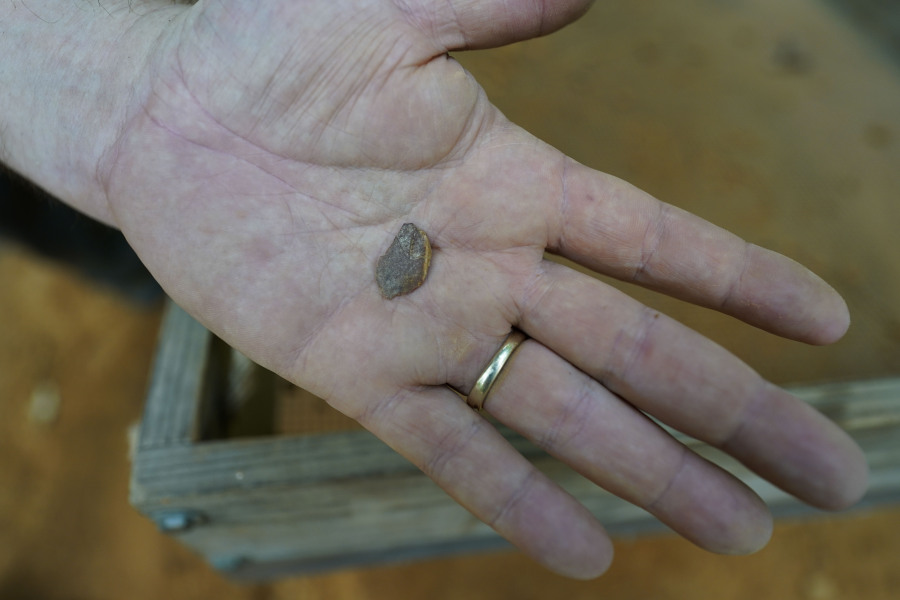VERNON PARISH, La. (AP) — Long buried under the woods of west central Louisiana, stone tools, spearpoints and other evidence of people living in the area as long as 12,000 years ago have become more exposed and vulnerable, due to hurricanes, flooding and looters.
This summer, archaeologists have been gingerly digging up the ground at the Vernon Parish site in the Kisatchie National Forest. They have been sifting through dirt to unearth and preserve the evidence of prehistoric occupation of the area.
“The site appears to have been continuously occupied throughout prehistory, as evidenced by a wide range of stone tools and pottery dating to each Native American cultural era up to European contact,” the U.S. Forest Service said in an news release.
The site was found by surveyors in 2003, according to the Forest Service. After hurricanes Laura and Delta uprooted trees, disturbing and exposing some of the artifacts, Kisatchie National Forest officials used hurricane relief money to begin salvage excavations to learn more about the site, and to preserve it.
“Between the looting and the hurricane damage we were really in danger of losing this site over time,” Forest Service archaeologist Matthew Helmer said during a media tour of the site in June.
Helmer, walked amid areas already excavated, pointing to changes in soil color and texture that, like the crude artifacts being excavated, can give clues as researchers work to determine facts about the people who occupied the area at different times over the millennia.
“We’re really writing the history of these peoples that lived prior to 1492, all the way back 10,000-plus years,” said Helmer.
It’s a welcome opportunity for Mark Rees, a professor of archaeology at the University of Louisiana at Lafayette and director of the Louisiana Public Archaeology Lab.
Still, Rees laments that the work is hampered by people who have made unauthorized digs and made off with material from the site.
“It’s like walking into the archive and finding a book that’s so rare it’s one of a kind and it predates writing itself, it’s like tearing a page out of that book and walking off with it,” said Rees.
The salvaged artifacts will be sorted, catalogued and examined as researchers at the archaeology lab seek to make determinations about past cultures at the site.
McGill reported from New Orleans.



